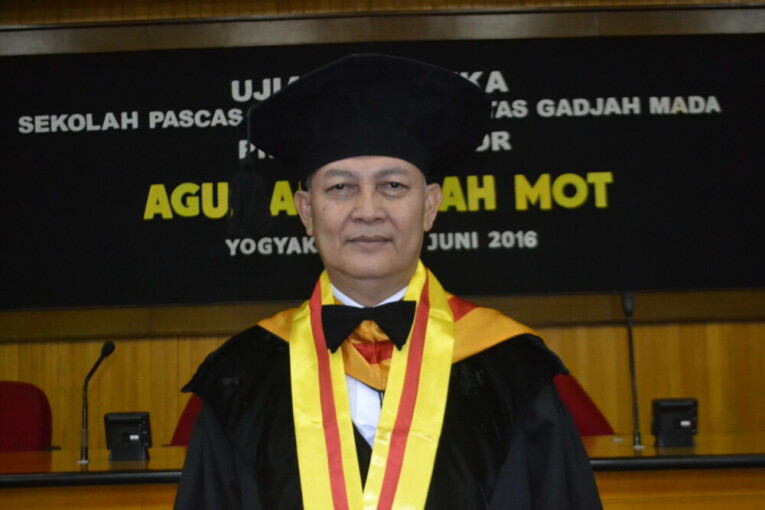
The high dependency of communities on the land as well as poor land management ability to adopt new technologies only accelerates land degradation. This is what happened to the Bontang Watershed in East Kalimantan. The level of environmental degradation in the watershed is caused by the activity of the community in managing the land without considering aspects of soil and water conservation. “What happened was the degradation of land, forest and land fires in the dry season and floods in the rainy season,” Ir. Agus Abdullah, M.Si., MM., said in his open doctoral examination at the Graduate School of UGM, Tuesday (30/6).
Agus Abdullah said that through the study of spatial ecological dynamics of organic carbon that was performed at this watershed, it is known that the loss was caused by damaged environment, especially in the middle and downstream. “In the middle and lower of the watershed, land use is dominated by the use of dry land, shrubs and settlements,” he said.
Meanwhile, if viewed from the bio-geopshysics aspect, it shows that its classification of surface runoff is between normal and high with soil erosion classification between very mild to very severe and sedimentation rate value between very low to very high.
According to the man, the handling of environmental damage in Bontang can be done through a revision of spatial watershed management that consider its enviromental aspects, the shifting of land use, and the strengthened cooperation and commitment between relevant parties. “It requires integrated human resource development,” he said.

